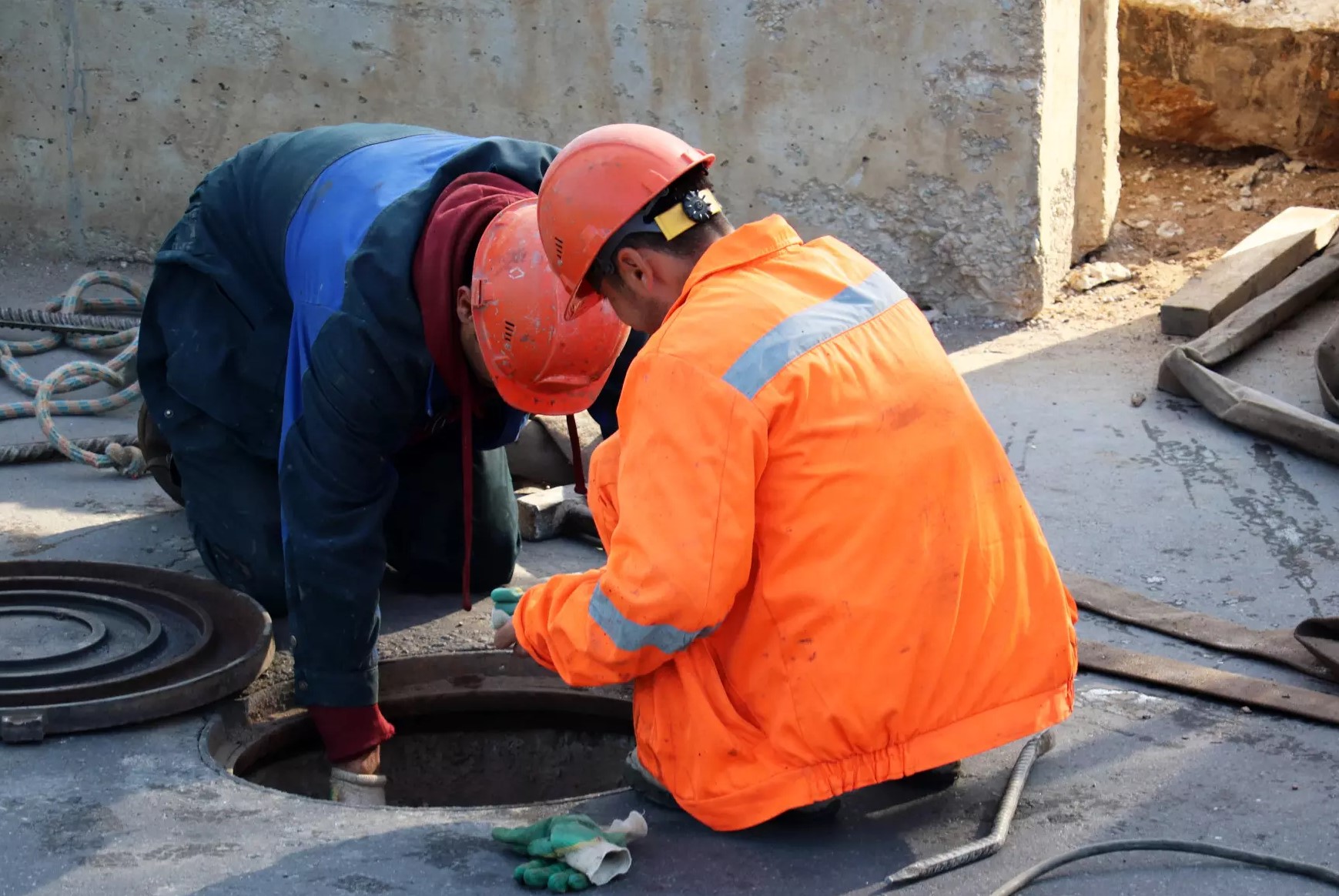Grease Trap in Perth
by siteadmin

Grease traps are a necessary feature for any commercial kitchen to ensure solids, fats and oils (FOGs) do not make it into the wastewater system. These small reservoirs are built into the wastewater piping and ‘trap’ grease while letting water pass through.
These are also a mandatory requirement for businesses applying for a trade waste permit. However, they require cleaning and a grease trap pumping service regularly.
Installing a Grease Trap
A grease trap is a key component in any retail food business. It is required by law to prevent fats, oils and grease (FOG) from entering the sewer system, where they can solidify and create blockages or overload waste water treatment plants. A typical commercial kitchen grease trap will consist of a well-ventilated, sealed tank, with an inlet and an outlet pipe. The trap is usually made from durable plastic, although concrete can also be used. The tank will be fitted with baffles to separate the FOG from wastewater, and to allow the sludge to fall to the bottom of the trap for removal.
The tank needs to be sized correctly to ensure the maximum flow capacity is not exceeded. This is because a faulty grease trap may not be able to handle the maximum flow of waste from a restaurant or food business, which could lead to a blockage and other problems. There are a number of different formulas and charts that can be used to determine the optimum size of a grease trap. However, it is important to consult with a plumber when selecting the right grease trap for your establishment.
Ideally, the grease trap should be installed below ground to minimize maintenance issues. It is also best to have the grease trap connected directly to the drainage system. This will reduce the frequency of pump outs and reduce the cost.
Most commercial kitchens use a single grease trap, but some larger restaurants and food processing businesses will install multiple grease interceptor tanks in series to achieve a higher capacity. In this case, the tanks should be designed to work together and should be of similar design. The tanks should be located close to the source of the waste, and should be sized so that the largest quantity of FOG is captured as soon as possible.
In order to avoid contamination of the sewerage system, the grease trap should be cleaned on a regular basis. A commercial plumber can conduct this service and ensure that the trap is pumped out with freshwater, and that the proper drainage systems are connected to it.
Cleaning a Grease Trap
A grease trap is an essential piece of equipment in any restaurant or other food service establishment. These devices prevent fats, oils and grease from flowing into the municipal sewerage system and clogging drains. The simplest way to keep your grease trap working correctly is to clean it regularly. If you don’t clean it often enough, the grease will build up and restrict drain flow, which can cause foul odors and even damage your kitchen plumbing. To avoid this, it is recommended to have your grease trap cleaned every 4 to 6 weeks.
To clean your grease trap, you must first ensure that the water is cool. This will help the FOG rise to the surface, making it easier to remove. Then, you can start by removing the lid of the tank using a wrench or crowbar. Be careful not to damage the gaskets underneath the lid. Once you have the lid off, you can use a shop vacuum to suck up the floating grease sludge. Next, you can use a scraper to remove any solidified grease waste from the sides of the trap and the baffles. Finally, you can scrub the trap’s lids, sides and baffles with soap, warm water, and a steel pot scrubber to eliminate bad odor and remove dirt and debris from the tank.
Once you’ve removed the solid grease waste from the trap, you can dump it in a suitable waste oil or grease bin for disposal. You should also empty and rinse the trap with a flush of clean water before putting it back together. Once you’re done, the drain should be able to flow freely.
If you have a large business, it’s best to hire a professional cleaning company to handle your grease trap maintenance. These companies can help you learn how quickly your trap fills up and create a cleaning schedule that will work for you. A professional can also help you understand the laws in your area regarding how often your trap must be cleaned.
If you are not sure about the law in your area, you should consult a lawyer. They will be able to explain the rules and regulations to you in detail, so that you can understand what you must do to protect your business.
Unblocking a Grease Trap
Grease traps are designed to reduce the amount of FOGs that enter sewage systems, but like any other system they can get blocked by fats, oils and grease. If this occurs, wastewater may back up into your business, causing a health hazard. In addition, the cost of cleaning and repairing the clogged system can be very expensive. A qualified plumber should be consulted to avoid unnecessary costs and ensure the installation meets regulatory requirements.
To keep your grease trap in good working condition, it is important to have it pumped out on a regular basis. This is because a dirty trap is a recipe for disaster and can result in costly damage to the plumbing, as well as unpleasant smells. Moreover, it can also lead to the Water Corporation inspecting your business and finding that you are putting out too much FOG.
A grease trap is a tank that sits in the drain run between sinks in a kitchen and the sewer system. It consists of a flow regulator and a separator to remove the fatty acids from the waste water. It can be made of stainless steel, concrete or polyethylene.
FOG can build up in city pipes and cause blockages, which leads to sewage backups that are costly for businesses. It can also contaminate water supplies and harm wildlife. To combat this, the Water Corporation requires restaurants and other businesses to have a grease trap on site and regularly clean them. It’s a requirement for obtaining a trade waste permit.
If you are not ensuring your grease trap is cleaned regularly, it will become full of FOG and won’t be able to work properly. You can easily check for this by removing the lid and looking inside. You can also look at the outlet line and other areas of your building to see if there are any signs of grease.
If you do find that your grease trap is full, you should call a drain cleaning company and have it pumped out as soon as possible. The company will bring the waste to a licensed disposal facility and dispose of it in an environmentally friendly way. This may include composting or Anaerobic digestion processes that can produce electricity for the local community.
Repairing a Grease Trap
Having a grease trap is a must for any restaurant, café or business that deals in food. These traps prevent fat, oil and grease (FOG) from going down the drains into the sewer system which can cause costly pipe blockage. It is also a requirement by law that businesses have their grease traps cleaned and pumped out regularly.
If you find that your grease trap has a leaking grate, cracked lid or the seals are deteriorating, it is time for a replacement. The best option is to get a high quality stainless steel trap, as they are more durable and can withstand the harsh acidic waste water that passes through them. If your grease trap is of a poorer quality or made from plastic, it can quickly corrode and break down.
You should always have your grease trap inspected and cleaned by a licensed plumber. They will ensure that the grease trap is in good working order and that it is the correct size for your business. They will also make sure that the inlet and outlet pipes are water-tight. Having the incorrect sized trap can lead to overflow and line blockages.
It is important to have your grease trap inspected and cleaned every three months or at the intervals required by your local council. Regular cleaning of your trap will reduce foul odors, keep the FOG from overflowing into your business or the street and help to minimize any costly repairs.
If it has been more than 90 days since your last clean out, you should immediately call a licensed plumber. Attempting to clean a clogged grease trap yourself can result in injury from the hot oil and grease, as well as making the situation worse. Never try to warm up the grease with hot water, stick objects into the trap or pour drain cleaner down a clogged grease trap as these can damage the trap itself or become lodged in the piping.
Septic Tank Armadale can provide you with a full service of all your liquid waste management needs, including grease trap cleaning, pump-outs and disposal for commercial restaurants and other food establishments. We will schedule your pump-outs, cleaning and inspections in a timeframe that suits you and your business.
https://www.septictankarmadale.com.au/
Grease traps are a necessary feature for any commercial kitchen to ensure solids, fats and oils (FOGs) do not make it into the wastewater system. These small reservoirs are built into the wastewater piping and ‘trap’ grease while letting water pass through. These are also a mandatory requirement for businesses applying for a trade waste…
Recent Posts
- Lexington Roofing Company: Redefining Roofing Excellence in Lexington, KY
- Unveiling Innovative Concrete Solutions: Custom Concrete & Coatings Redefines Excellence
- Expert Cleaners Lexington KY Comprehensive guide on cleaning solid surface countertops
- TAP Heating and Cooling: Your Premier Choice for 24-Hour HVAC Repair Services in West Chester and Maineville, Ohio
- Dos Reyes PGH: Revolutionizing Pittsburgh’s Culinary Scene with Unmatched Food Truck and Catering Services
